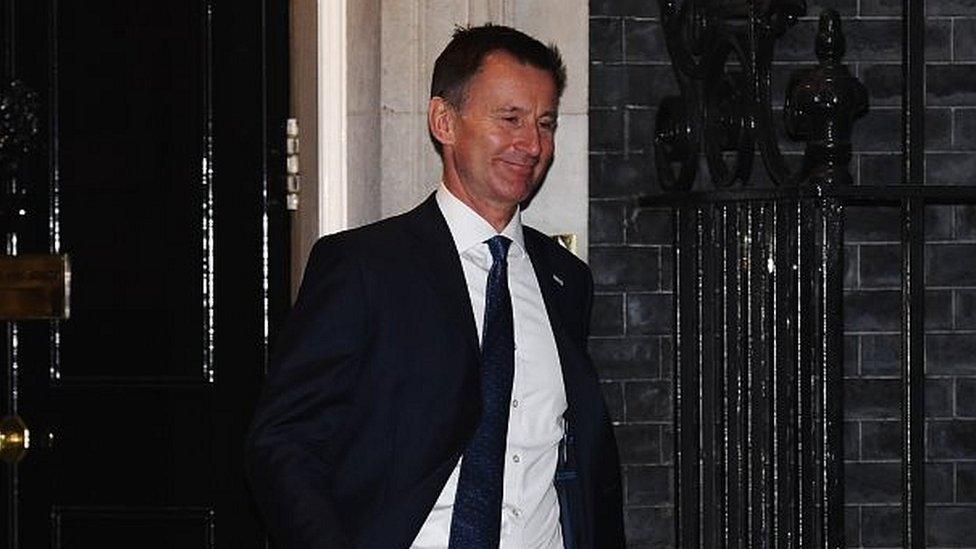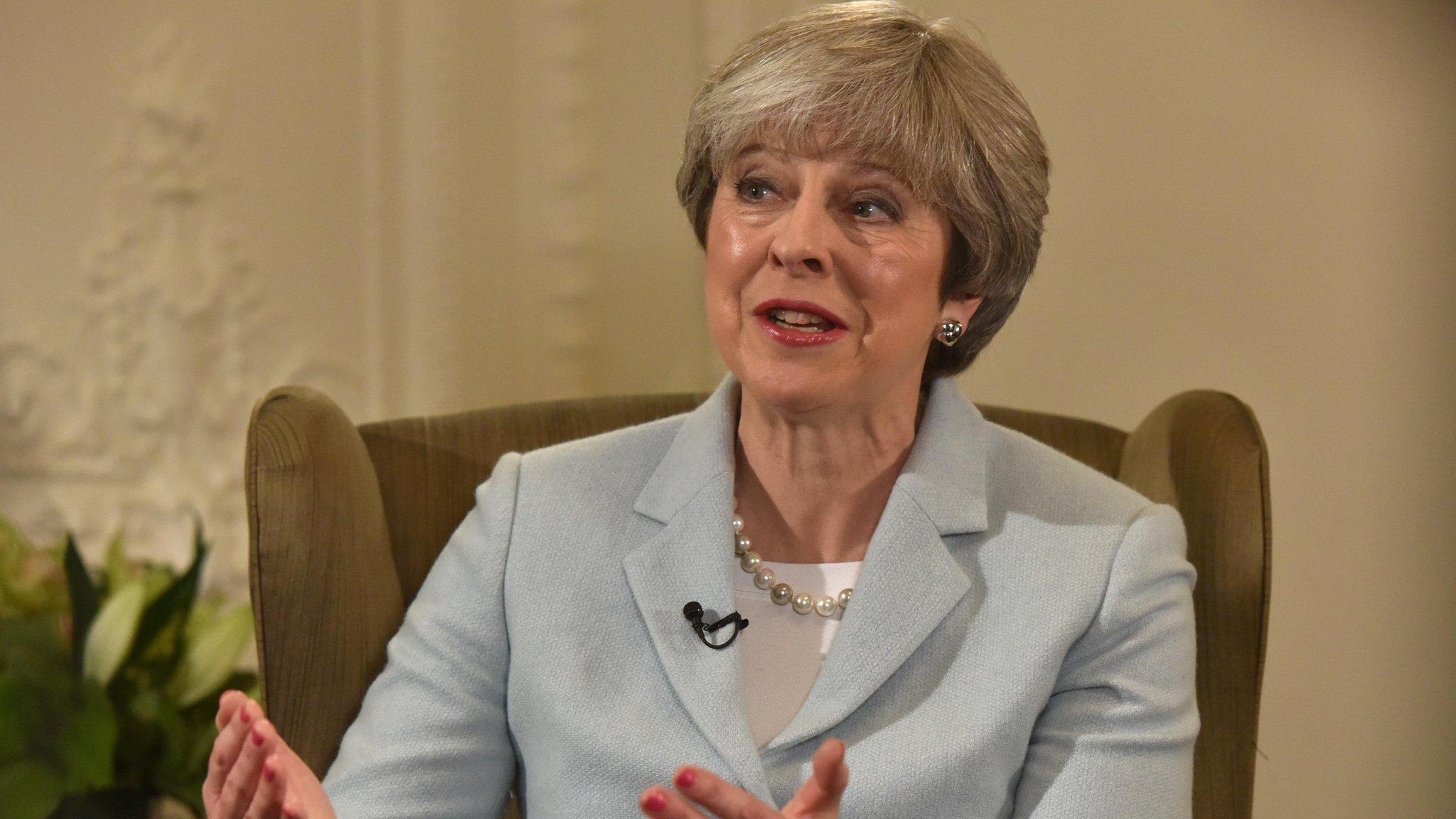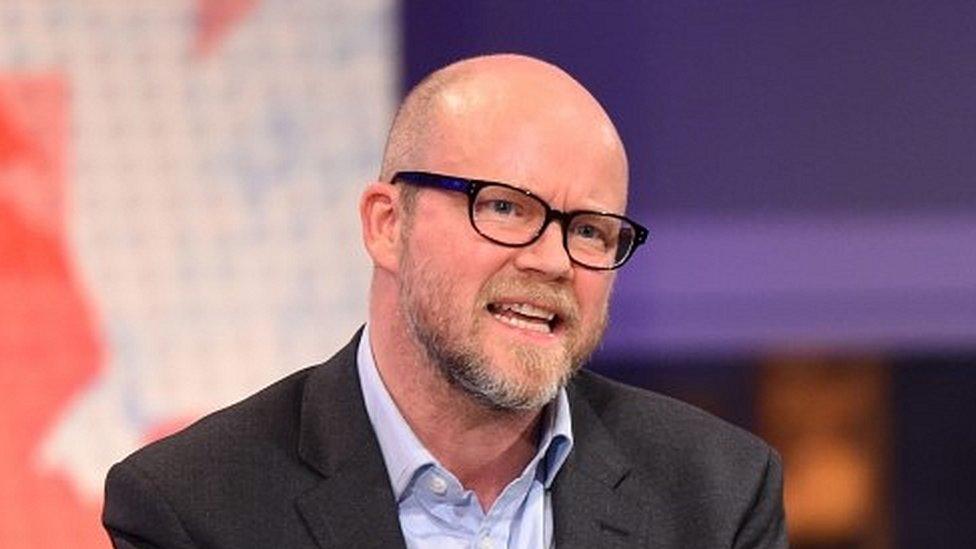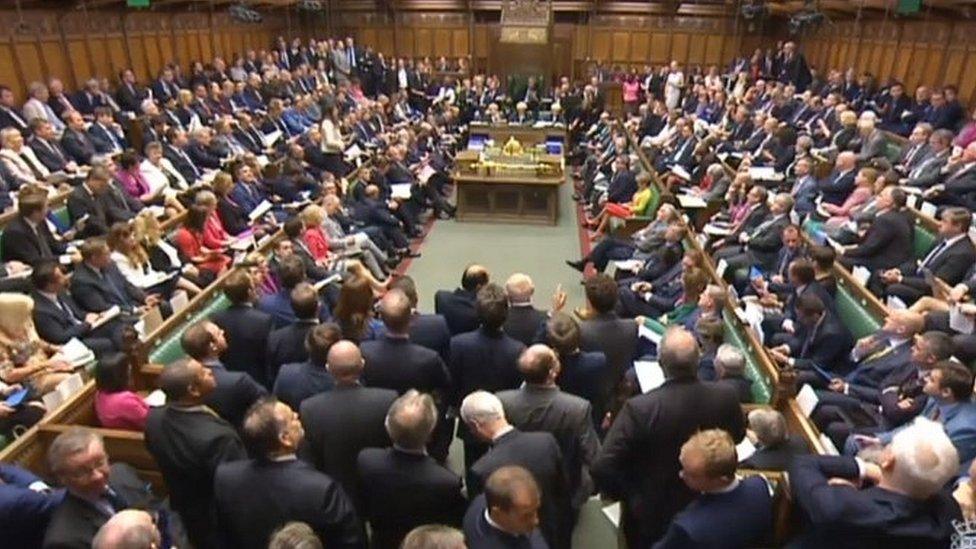Cabinet reshuffle: What took so long in No 10?
- Published

Jeremy Hunt is staying as health secretary
The reshuffle isn't over, but we already know that it was not just the prime minister who had her say today, but her ministers too.
Jeremy Hunt, who has stayed as health secretary, and Greg Clark, who has stayed as business secretary, were both in No 10 for more than an hour this afternoon.
I understand that rather than meekly accepting whatever was being dangled before him (at least one of the likely jobs was a move to become business secretary, possibly a job swap with Greg Clark) the Health Secretary Jeremy Hunt, in fact argued his case for staying at the Department for Health and expanding his role to take on planning for the future of social care in England.
It is said the situation was "fluid", and the PM was "persuaded" by his arguments, agreeing to keep him in position at the end of their conversation. Senior government sources dispute that Greg Clark also refused to move - Hunt getting his way and staying at health had clear knock on effects which meant Clark's conversation was merely about staying in his role.
There's still a mystery over the potential appointment of Chris Grayling as chairman at Tory HQ.
Number 10 disputes it was ever the plan, but two other sources say they had been told it was the case, and that in the end No 10 had to "fiddle with the whiteboard", appointing well liked Brandon Lewis in his place.
But Theresa May's detractors will claim this as evidence that she didn't have the authority to move her own ministers. One senior MP said "this reshuffle is embarrassing… far from asserting her authority, or some new found strength it's just highlighted how weak the PM is".
No 10 is promising more moves before the end of the evening and more diverse new appointments through the day tomorrow.
But while this isn't the most dramatic of reshuffles, it seems to have followed the tradition of not going quite according to plan.
- Published7 January 2018

- Published7 January 2018

- Published7 January 2018

- Published7 January 2018
